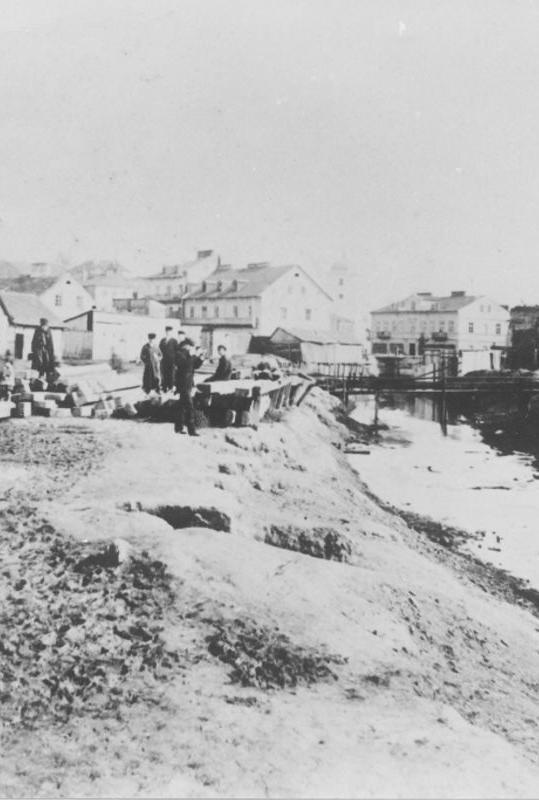
Nadstawna Street
Ulica Nadstawna
Nadstawna Street which ran on the western side of the current Castle Square, was referred to as the street of cheders, as many schools for Jewish children were located there. The Gur (Góra Kalwaria) and Kuzmir (Kazimierz Dolny) Hasids’ houses of prayer were also situated in that street. Although Jewish Lublin was known as a “stronghold of Orthodoxy”, the new trends of Socialism and Zionism also gained increasing significance in the town from the late 19th century. An empty square used to be located at the crossroads of Nadstawna and Kowalska Streets, where political rallies would take place. Tucked among the numerous houses of prayer, the seat of the Bund party, its trade unions and the Lubliner Shtime newspaper office could also be found in Szeroka Street in the 1930s.The workers sang their songs with growing pride and joy, and whenever eight or nine gathered, a tenth would invariably spring up from somewhere to preach to them, always beginning with, “Comrades and citizens.” Elderly Jews, passing such gatherings, would mutter disapprovingly under their breath, “If things don’t get better, they’ll surely get worse.” Jacob Glatstein, The Glatstein Chronicles - Homeward Bound, 2010 (Ven yash iz geforn, 1937)It seems that in no other town in Poland did parties seem to have fought each other as heatedly as here in Lublin. And this was due to the fact that every party was burning with the flame of Hasidism, and every party remained unyielding in its great faith and proud of the old holy community. Mordechai Tsanin, Iber shteyn un shtok: a rayze iber hundert horev-gevorene kehiles in Poylin (1952)





